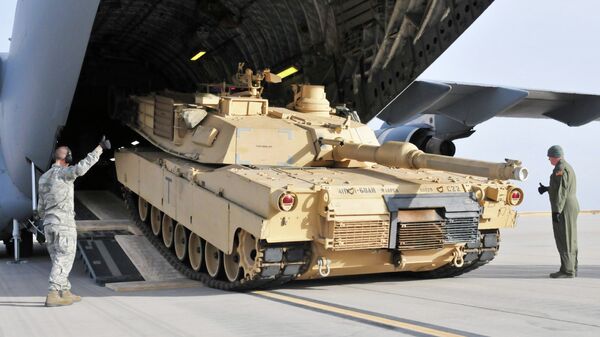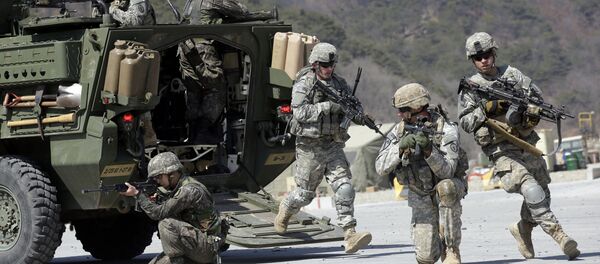RPGs are a common threat to armored vehicles worldwide, especially in the European and Central command. To find a solution, the US Army wants to test different solutions on combat vehicles like the Bradley Fighting Vehicle, Stryker combat vehicles and M1 Abrams tanks.
This effort is inspired in part by a fear of Russia’s potential to surpass America in the field of armor protection.
The service’s recent focus on Middle Eastern conflicts placed more emphasis on technology needed for CENTCOM combat, such as Mine-Resistant Ambush-Protected Vehicles, which are designed to counter improvised explosive devices.
Out of four possible solutions the Army intends to test this summer, three will rely foreign technology, including two from Israel. These systems have already been developed and fielded, and the Pentagon hopes they can be integrated into existing systems. While the Army has been secretive about its plans, but Lexington Institute analyst Daniel Goure says that a brigade’s worth of vehicles with Active Protection Systems (APS) will be fielded.
"We are always looking for ways to enhance the protection provided in our combat vehicles and recognize (APS) as one of our highest priorities towards this end," said Ashley Givens, a spokeswoman for the Army’s Combat Ground Systems program office.
Givens revealed that the service is also developing its foundational science and technology initiative, the Modular Active Protection System (MAPS). It won’t be ready anytime soon, however, and in the meantime the Army has critical operation needs that must be met.
"By prototyping these integration activities cooperatively with Army S&T, potential APS vendors and our platform integrators, we will be able to posture the Army with solutions that can be more rapidly integrated and greatly reduce both acquisition and operational risk," she said.
It has been reported that the US Army is in the process of signing an agreement with Israel to use its Trophy system on American combat vehicles.
Trophy, which combines an active vehicle protection system and hostile fire detection, was originally developed for the Israeli government by Rafael Advanced Defense Systems and proved to be an outstanding asset during Operation Protective Edge, when border patrols were increased along the Gaza Strip.
During Eurosatory, a large conference on land warfare held in Paris, the Rafael booth showed videos of Trophy withstanding a direct hit from an RPG in close quarters. After the smoke cleared, the vehicle appeared to be virtually unblemished. A German company called Rheinmetall Defence is also throwing its hat in the ring.
The Army is also considering Iron Fist, a creation of the Israeli Military Industry (IMI) and Iron Curtain, a product of the Artis Corporation based in Canada. Iron Curtain began as a program for the Defense Advanced Research Projects Agency.
It is believed, however, that Trophy will be the easiest system to integrate.
"We’ve partnered with Rafael for the last five years to bring Trophy or Trophy-like technology to the US to meet the evolving survivability requirements of the Army and Marine Corps that was born out of some previous attempts by Rafael to get Trophy into the US market dating back to even [Future Combat System] days," said Mike O’Leary, who heads the Trophy program at DRS Technologies.





